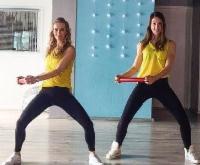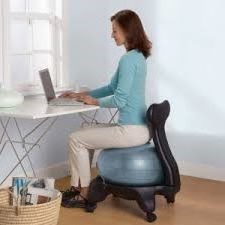Evidence Update: Why is Exercise Important for Breast Cancer Survivors?

Establishing a consistent and comprehensive exercise routine that involves upper and lower body strengthening as well as a cardiovascular component should be a goal for all individuals. This is especially important for breast cancer survivors who may benefit from interventions that can offset the side-effects related to breast cancer treatment. A recent study confirms the findings that exercise after cancer-related treatments may improve physical and emotional well-being, maintain bone health, improve balance, reduce risk of recurrence, reduce body mass index, and manage and prevent lymphedema. Participating in aerobic exercise programs for as few as three weeks may have an impact on the health and well-being of survivors. In addition, whole body resistance training programs pose numerous benefits for breast cancer survivors to regain strength and improve body composition. Participating in a regular exercise routine not only has an impact on health, but helps empower individuals with a sense of accomplishment and involvement in their own self-care. Dieli-Conwright CM, Orozco BZ. Exercise after breast cancer treatment: current perspectives. Breast Cancer: Targets and Therapy (Dove Med Press) 2015; 7:353-362.
Patient Perspective: Shannon

As the Registered Nurse in the family, I was the one that took care of my family and friends by phone or in person. I was studying and preparing for the Certified Diabetes Educator Certification Exam. My stress releaser from studying for my exam was Spin and Step classes. My favorite pastime was relaxation baths. When I heard the words ‘you have breast cancer’ on Jan. 21, 2015, it changed my world completely. I became the first generation of breast cancer in my family. My support included my husband and a lot of extended family and very good friends. It was recommended that I have a lumpectomy. However, having some history with breast issues, I opted to have a bilateral mastectomy. I noticed weakness in my core very early on and the inability to do the walk-the-wall exercise. My surgeon sent me to physical therapy, but I became very frustrated with another clinic’s lack of experience in caring for a patient with breast cancer. After the implant exchange surgery, I noticed that it was difficult opening jars and containers, taking off clothes over my head, reaching overhead… and the worst part was having a difficult time getting out of my bath tub. My arms were weak and so was my core. I asked my friend who is a Physical Therapist if this was going to be my “new norm?” She urged me to ask my doctor for a referral for physical therapy. A friend had used TurningPoint and recommended I give it a try. TurningPoint was out of network with my insurance but the financial assistance program, made possible through grants and donations, made it possible for me to receive the care I needed. TurningPoint was a world of difference! I learned new information on lymphedema that went beyond just looking for it in the extremities. I spent my first 3 weeks of therapy addressing my lymphedema and then working on my core and arm strengthening. After each session I felt like I had been to a health spa and I did not want to leave because my team was the bomb. I am now back in the gym with spin classes and have picked up kickboxing and added yoga. My new favorite class! Another positive experience from my breast cancer journey: My life dream was to be a fashion model and I had the opportunity to walk on the runway in a Breast Cancer Survivor fashion show with a local department store in October 2016. Thank you TurningPoint for helping me get moving and get my journey back on track!
Evidence Update: Why is Posture Important?

Posture is a term used to describe how your body is positioned when you are standing, sitting or lying down. Posture can change after injury, surgery or other treatments such as radiation. A research study in which a post-mastectomy group was compared to a control group found a significantly higher incidence of faulty body postures which was observed among women after treatment for breast cancer. Faulty posture puts more stress on your muscles, tendons and ligaments. Poor posture after breast cancer treatment can lead to increased discomfort and injury. Good posture allows your joints to have less stress and work more effectively while helping your vital organs remain in the best position and your nervous system to be able to function effectively. Being aware of good posture is the first step to breaking poor postural habits and reducing stress and strain on your body. Malicka I, Barczyk K, Hanuszkiewicz J, Skolimowska B, Wozniewski M. Body posture of women after breast cancer treatment. Ortop Traumatol Rehabil. 2010 Jul-Aug;12(4):353-61
Patient Perspective: Ellen

July 28, 2016. I can’t remember my husband’s birthday but I will never forget that day. It’s the day I began my journey as a breast cancer patient, diagnosed with invasive mammary carcinoma that had spread to my lymph nodes. This proved to be the toughest and in some ways, the most enlightening experience of my life. Life before surgery was very different. Packed with long work weeks that required significant amounts of global travel, I was always on the go, managing my work and personal life with fine precision and continuously working hard to keep my life under control. On July 28th, all of that changed. I was suddenly out of control of what was happening to me and my family. I was deeply impacted by both the physical effects of my cancer and the change in my perspective on life. My doctors provided excellent patient care but I still worried constantly. There are so many things going on with my body that no one seems to address. What exactly did the surgery entail? What can I do and not do? What type of bra should I be wearing? What are those ‘vein looking’ things (cords) under my arm? How do I get back the full use of my arm? Just to name a few. While the physical effects of my diagnosis were significant, the impact on my perspective was greater. Being home and away from the office for several months was eye opening. I felt closer to my son and husband, began to laugh more, and feel emotions more strongly than I had in years. I realized I had let my job consume my life–consume my time, my emotions and my general sense of well-being. That was something that had to change once this was all over. Enter TurningPoint. My call to them was the smartest decision of my journey! They not only help with the physical effects of my treatment, they provide unending support, guidance and compassion. You feel it from the moment you walk through the door and receive a warm smile and greeting from Sandy. Having physical therapy with Grayson and Anita is like visiting a girlfriend. I can pour my heart out to them and even cry (which has happened a few times) without feeling judged. They care about me, all of me. I have come to look forward to my visits and always feel great when I leave … physically and emotionally. I feel very blessed to have found TurningPoint!










